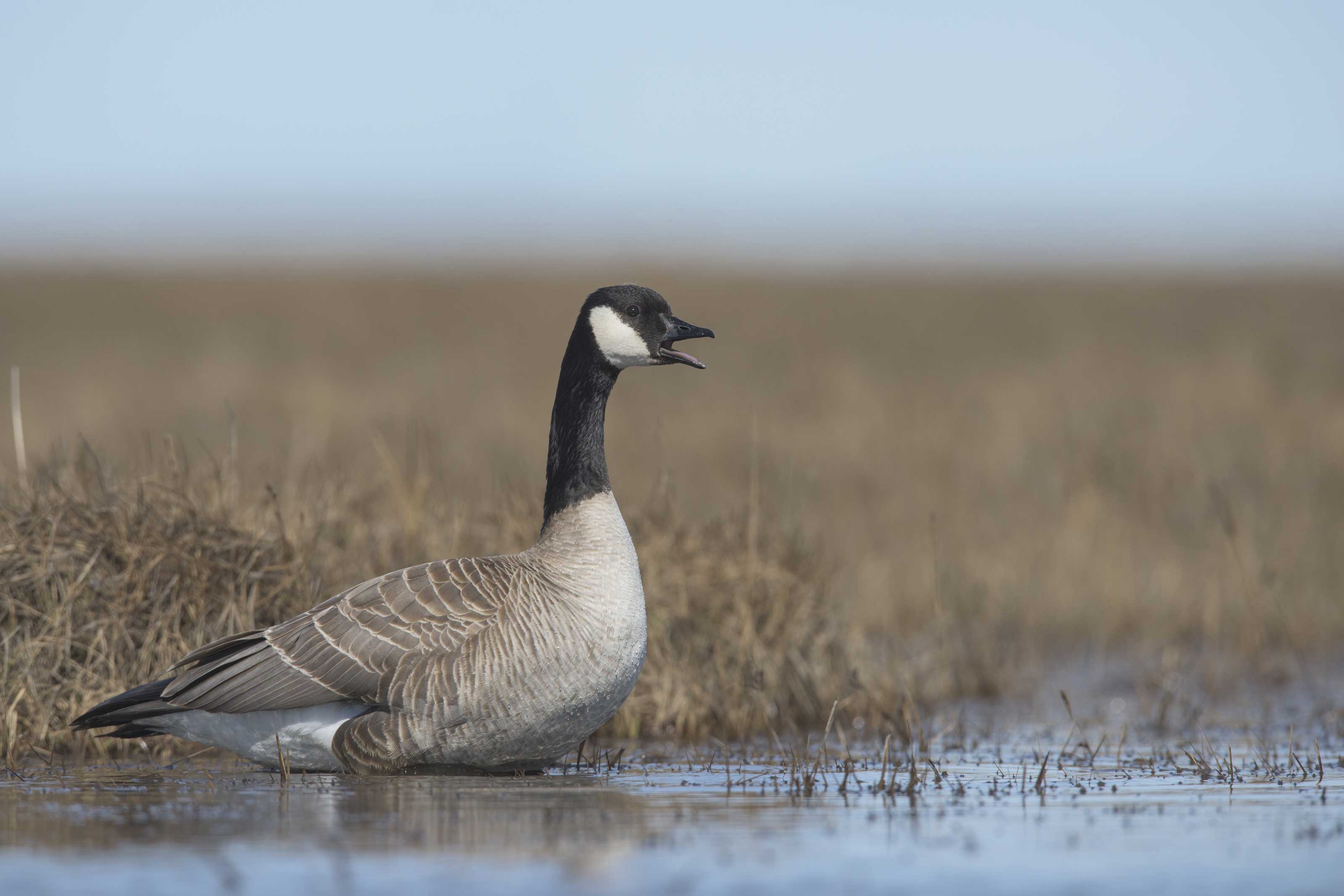
Sunshine is abundant this time of year, but cooler temperatures this week have slowed the melting of a well above normal snowpack in Fairbanks. That’s affecting migratory bird’s arrival at a local refuge.
The first few Canada Geese were spotted at Creamers Field Migratory Waterfowl Refuge in Fairbanks back on April 4th. That’s among the earlier first arrival dates on record, but longtime Alaska Department of Fish and Game wildlife biologist Mark Ross said that can be deceiving “because it’ll always be certain individuals of the species that are pushing the envelope to get to their breeding sites as quick as possible.”
Ross said the larger migration has been slow to build, something he attributes to this spring’s late lasting snow cover.
”We’ve had a big snow year as everyone knows. It’s above average,” Ross said. “And there’s still a lot on the ground.”
Ross said during his 21 years running education programs at the refuge, migration has typically peaked at about one thousand geese between April 22nd and 24th.
”I’m hoping we’re on track for that ’cause that’s when we’ve got about 600 schoolkids scheduled to come out to witness this great migration,” Ross said. “And this is the 50th anniversary of the community rallying to help purchase the field so there’s wildlife habitat. And it’s the 50th anniversary of the bird watch for fifth graders.”
Ross noted that the peak abundance date is in line with the first arrival dates of fifty years ago. He cautions making assumption about why, noting that grain has been scattered for the birds at Creamers since the 1940s.
”These waterfowl are very long-lived,” Ross said. “And they’ve got a memory of this feed on the field.”
Ross says Canada Geese, which can live 15 years or more, pass that experience on to successive generations.
Dan Bross is a reporter at KUAC in Fairbanks.




